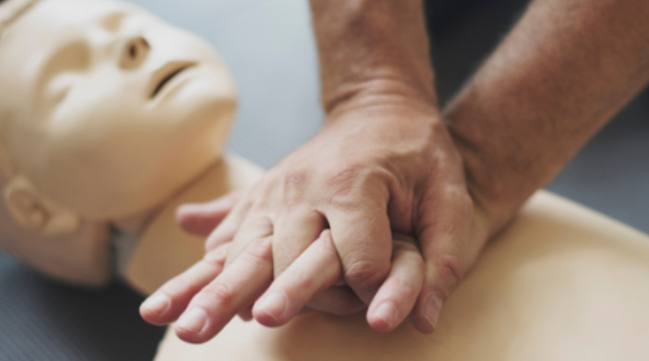
Introduction: Embracing Safety Training in the Heart of Australian Sports
Sports in Australia are more than just games; they’re a way of life. From cricket under the summer sun to rugby clashes that shake stadiums, Aussies thrive on the thrill of competition. But, amidst the exhilaration, we can’t overlook the potential for accidents and injuries. That’s where basic First Aid, CPR, and Manual Handling Training step in as the unsung heroes of the sporting world.
As per a 2023 survey conducted by AusPlay, a staggering 18.27 million Australians aged 18 and above actively participated in various sports or physical activities within the preceding year.
Remarkably, 19% of these participants reported experiencing some degree of injury, accounting for a substantial 3.47 million Australian adults.
It’s worth noting that this figure would see a significant surge if the survey encompassed those below the age of 18. In fact, a report by medical insurer Medibank states that ‘5.2 million Australians suffer sports-related injuries each year and that these sports injuries cost the Australian community approximately $2 billion last year in 2022.’
Out of the reported injuries for 18 years and above, approximately 52,300 were of a severity necessitating hospitalization.
The Significance of First Aid in Sports
In the realm of sports, speed and precision are everything. Injuries, unfortunately, are almost as inevitable as a sunrise. Whether you’re a player, coach, or dedicated spectator, having a grasp of first aid techniques can be the difference between a speedy recovery and prolonged agony. In this kind of environment, first aid training becomes of paramount importance.
Reducing Recovery Time: Back on the Field, Sooner
Picture this: a player makes a sharp turn, and suddenly, there’s a telltale cringe of pain. Sports injuries demand swift attention, and that’s where your knowledge of first aid response comes into play. According to a study by the International Olympic Committee (IOC), rapid on-site management of sports injuries can significantly reduce recovery times and complications.
Saving Lives: When Seconds Count
While it’s rare, there are moments when an emergency first aid response becomes the line between life and death. From concussions that demand a watchful eye to sudden cardiac events that require immediate action, your proficiency in first aid could be the ultimate game changer. According to a report by the American Heart Association, early CPR can double or even triple a person’s chance of survival in cardiac arrest situations.
First Aid Training: A Vital Skill Set for the Aussie Sports Enthusiast
In the land Down Under, where sports are as diverse as the landscape itself, being equipped with first aid skills is a badge of honor.

According to recent statistics, over 70% of sports-related injuries occur outside of professional settings. That means your knowledge could be the beacon of hope on local pitches, courts, and fields.
Taking the First Step: Training with Experts
In Australia, we’re fortunate to have access to world-class first-aid training facilities and professionals. First Aid Brisbane is a leading provider in the field. They offer comprehensive courses that not only cover the basics but also delve deep into advanced techniques that can be tailored to the dynamic world of sports.
Essential First Aid Measures for Sports-Related Injuries
Every sports enthusiast and athlete should equip themselves with knowledge about prevalent sports injuries and the corresponding first aid protocols in case of unforeseen accidents. Being adept at administering immediate aid is a fundamental aspect of overall preparedness for any sports scenario, and every club should consider a first aid course as vital training for its members.
Among the most frequently encountered sports injuries in Australia are sprains, strains, fractures, and contusions.
In the case of a sprain or strain:
The primary approach involves implementing the RICE method: Rest, Ice, Compression, and Elevation. To alleviate swelling and discomfort, apply a cold compress, such as an ice pack, to the affected region. Then, securely wrap the area with a compression bandage and elevate it.
For fractures:
It is imperative to seek professional medical assistance. If you suspect a fracture, promptly call for medical help. Prior to professional intervention, mitigate swelling by applying a cold compress, and if feasible, immobilize the area with a splint.
In the instance of a contusion:
Commonly referred to as a bruise, similar measures apply: employ an ice pack, administer compression using a bandage, and keep the area elevated.
Concussion:
Recognizing the signs of a concussion is of paramount importance. These indications encompass confusion, dizziness, headaches, memory lapses, and nausea. Should any of these symptoms manifest, seek immediate medical attention.
Advanced First Aid: CPR and Manual Handling
In high-intensity sports, where exertion is the norm, knowing how to respond to cardiac events can be a lifesaving skill. Additionally, understanding the principles of safe manual handling can prevent secondary injuries when assisting fallen players.
CPR: A Lifesaving Skill
According to the Australian Resuscitation Council, approximately 30,000 people experience cardiac arrest outside of hospitals in Australia each year, including in the sporting arena. If you are in the Perth area and would like to learn CPR, follow the link to Perth first aid courses.
Manual Handling: Protecting Players and Rescuers
When an injury occurs, knowing how to safely move and handle an injured player is crucial to prevent further harm.

Manual handling techniques taught in first aid courses can ensure that you, as a sports enthusiast, can provide assistance without worsening the injury. It’s not just about the injured player; it’s also about protecting yourself from injuries that can occur during the rescue process.
Conclusion: A Safer, Stronger Sports Community
First Aid, CPR, and Manual Handling Training are not just skills; they’re a commitment to the well-being of our sporting community. By investing in this knowledge, you’re not just a spectator or a player; you’re a guardian of the game.
Take the first step towards becoming a First Aid pro with STC First Aid Experts’, in class and online courses. It will give you the confidence you need to handle small sprains to emergency situations, and, in the world of sports, every second counts, and every skill matters.













